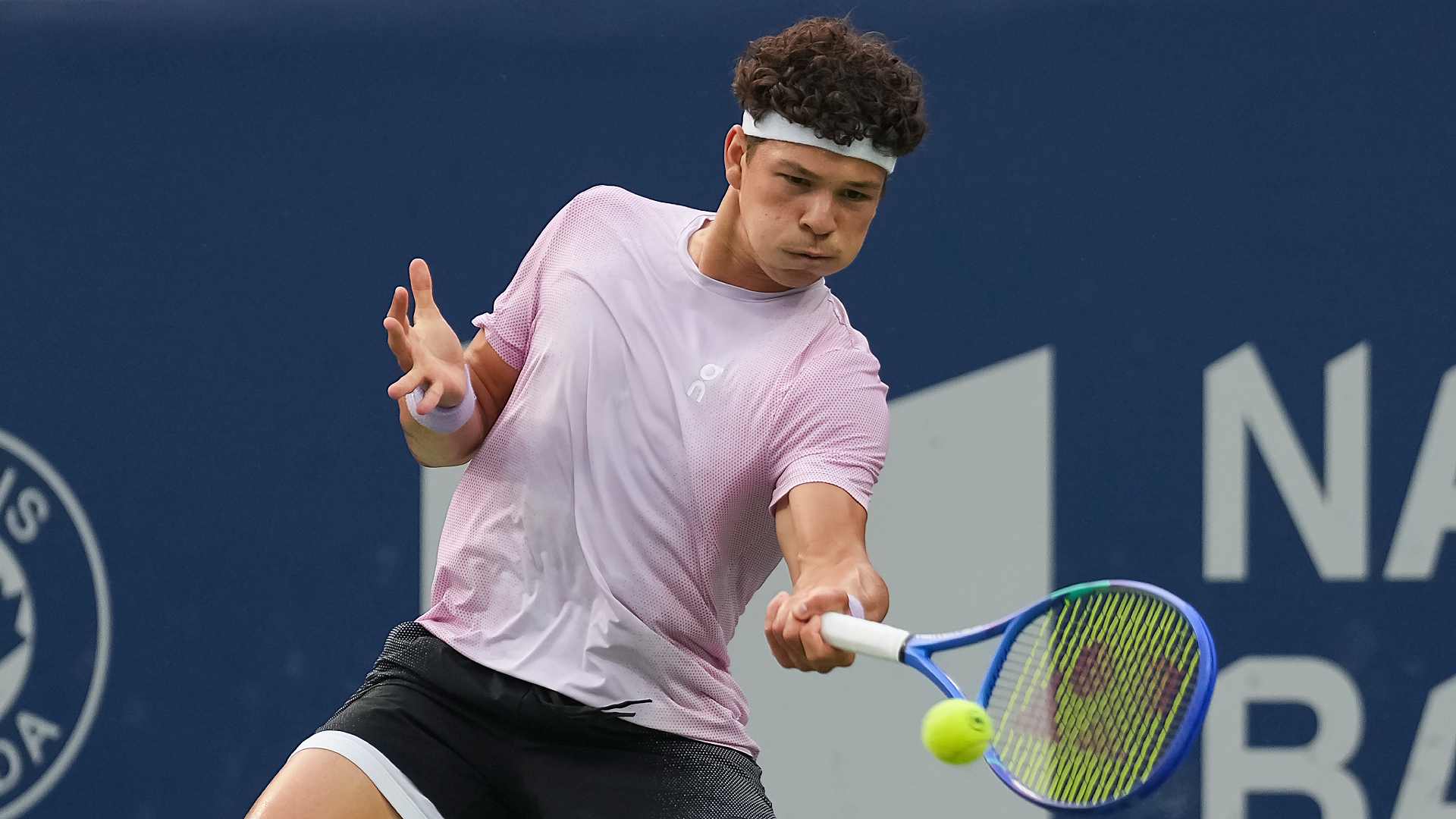Behind the curtain of a tennis racquet stringing room at the National Bank Open
Open this photo in gallery: Jared Horwood, centre, head of the racquet stringing team servicing hundreds of racquets for players at the National Bank Open. Each racquet must be precisely strung and completed on a specific deadline.EDUARDO LIMA/The Globe and MailIn a little-known curtained workspace next to Sobey’s Stadium, behind the scenes of Canada’s biggest pro tennis tournament, a team of stringers work around the clock to ensure players’ racquets are ready on demand.The eight-person pro stringing team in Toronto during the ATP’s National Bank Open handles hundreds of racquets every day on sophisticated stringing machines. Each must be precisely strung to a player’s desired tension and completed on a specific deadline.Stringers are vital to a tournament, but often unsung.Each athlete at the men’s edition of this Masters 1000 tournament drops off as many racquets as he needs each day – three to six for the average singles match, but some players ask for up to 10. They bring their own racquets and string, and they specify exactly how and when they want each strung, tailored to their style of play.There’s a reason many players carry such large bags out for a match, stuffed with several racquets.Canadian teen Victoria Mboko's unexpected victories have put her right at centre court“They like to use a fresh racquet every ball change, and there’s about six ball changes if you go three sets,” said Jared Horwood, head stringer of the pro stringing team at the National Bank Open. “Most of the time, the players don’t break the strings. They restring the racquets just to keep the same tension.”Throughout the National Bank Open, the eight-person team collectively strings some 130-200 racquets daily, at the speedy pace of about 12-20 minutes per racquet. The stringers keep a database for specific player preferences. A player gets the same stringer each time throughout the tournament to assure consistency.Each of the eight stringers in Toronto use a fancy electric Babolat Evolution machine, which holds the racquet, clasps the string and pulls the desired tension. The stringer also stencils the logo of the racquet brand onto the strings.Some players tried out various racquet tensions when they first arrived in Toronto, having four racquets strung at four different tensions, pulling the weight of the string either tighter or looser, because they weren’t sure what they wanted to feel in these specific courts. Other players always request the same tension everywhere they play in the world. Some adjust tensions throughout a tournament, as weather and court conditions change. When it’s hot on court, the ball springs, so you need to string tighter. When it cools a little, they want it looser.Through years on court, the racquet has become an extension of these elite pro players, and each has a finely tuned sense of how the equipment should feel to optimize performance.“Some even go up by half a pound, maybe string their racquet at 52 and they want it at 51.5 next,” said Horwood. “The coaches get so many racquets strung that they know what’s working well for their player. And players can hit with a racquet and say right away, ‘Doesn’t feel right, I’m going to try to something different.’ It’s an evolving art.”The Merchant of Tennis, a Canadian tennis shop, is the official stringer this year at the NB Open in Toronto. They strung for the tournament from 2008 to 2014, then returned last year when the WTA was playing the NB Open in Toronto.Horwood, whose parents started the business back in 1992, first learned to string when he was 10 years old, standing on a stool beside the machine, learning from professional stringers.He grew up playing tennis, stringing his own racquets. When the Torontonian went to play NCAA tennis at the University of Arizona, he drove a machine all the way to Tucson so he could string for himself and his teammates. Fast-forward to this tournament, where the now-25-year-old has strung for everyone from American Ben Shelton to Canada’s Gabriel Diallo.Open this photo in gallery: The eight-person team strings around 130-200 racqets daily, with each racqet taking about 12-20 minutes.EDUARDO LIMA/The Globe and MailThe stringing team at this tournament also includes stringers who have come from many countries – those who regularly work at big tournaments like Wimbledon, Roland Garros, the Australian and U.S Opens. When the Canadian Open is done, some of the stringers will go work on the teams at the next events in Cincinnati or New York.Some players travel with their own stringer, or they go to a private off-site stringer. But most use the tournament’s official stringers.The stringing team triages the most urgently needed equipment first. Some players want their racquets freshly strung immediately before a match. Others specify they want them strung the night before, because they like the strings to settle.The stringers keep the players’ requests confidential.One player in this tournament likes his tension at just 21 pounds, so it’s loose like a trampoline. Some will string as high as 60 pounds. Players can be picky about their logo, asking it to be stencilled in an exact spot on the strings. Others are fastidious about how the string knots are tied.Sometimes they receive a rush request during a live match, if a player smashes a racquet, breaks a string or simply wants a different tension. The player alerts the umpire, who radios in the request and a runner gets a racquet to the stringing room.“We’ll be all ready,” said Horwood. “Cut the strings out. Someone will be ready with the string, put it on the machine, do it as fast as possible, stencil it, and they’ll run it back.”The number of daily racquets ebbs and flows with the number of players on the grounds. Horwood estimates that by the end of the 12-day tournament, the team will have strung some 1,600-1,700 racquets, each one unique to a player’s tastes.“These players have played so much that they know what they want to do and what they want us to do,” said Horwood. “We just cater to that.”




.jpg)







